#bottomland forests
Explore tagged Tumblr posts
Text
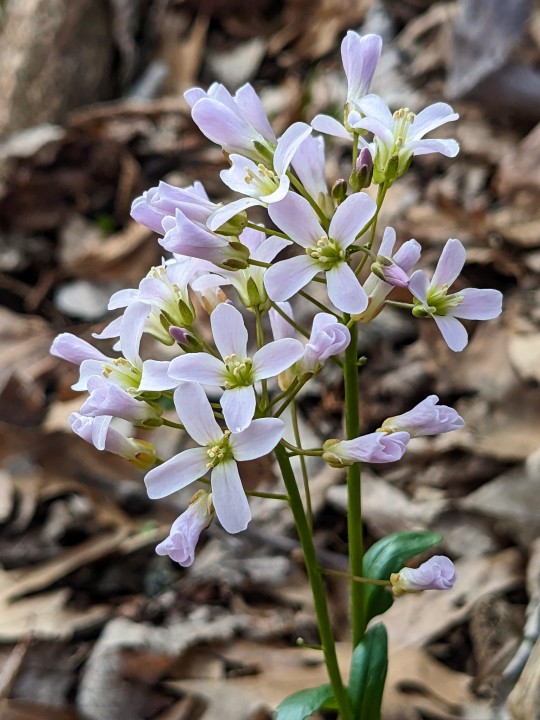
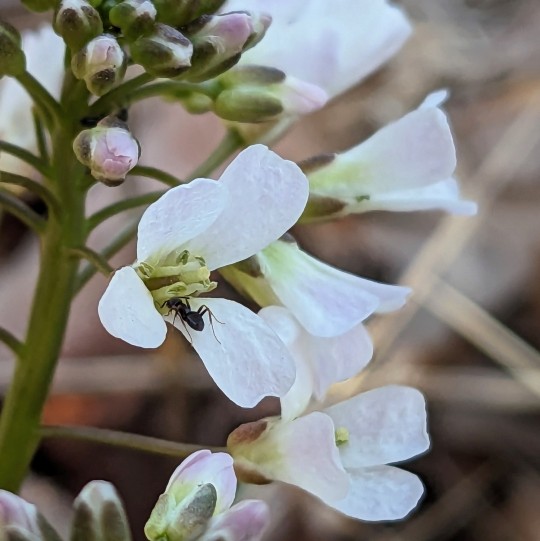
Purple Cress
Cardamine douglassii
Also known as Limestone Cress, this species in the mustard family features clusters of light purple flowers in early spring and can be found in wet and swampy forests with calcium carbonate rich soils. It's native to parts of the eastern United States and southern Ontario, Canada.
The plants I photographed are part of an isolated population remaining in a tiny bottomland forest remnant in St. Charles County, Missouri. Unfortunately, the rest of the forest has been lost due to suburban sprawl and what little of it remains has many invasive species, including winter creeper, callery pear, and japanese honeysuckle trying to encroach from surrounding developments and outcompete native plants like this one.
March 12th & 13th, 2024
St. Charles County, Missouri, USA
Olivia R. Myers
@oliviarosaline
#botany#cardamine douglassii#cardamine#purple cress#bittercress#brassicaceae#nature#naturecore#forest#fairycore#woods#missouri#native plants#native flowers#forests#hiking missouri#suburban sprawl#urban sprawl#ecology#plants#flowers#wildflowers#purple flowers#native plants of america#forest floor#bottomland woods#bottomland forests#nature photography#flower photography#spring
38 notes
·
View notes
Text
Word List: Land

beautiful words with "land" to try to include in your poem/story
Bottomlands - low-lying land along a watercourse
Cloudland - the region of the clouds; the realm of visionary speculation or poetic imagination
Fairyland - the land of fairies; a place of delicate beauty or magical charm
Fantasyland - an imaginary or ideal place or situation
Fatherland - the native land or country of one's father or ancestors; one's native land or country
Garland - a circular or spiral arrangement of intertwined material (such as flowers or leaves); anthology, collection
Grassland - farmland occupied chiefly by forage plants and especially grasses; land on which the natural dominant plant forms are grasses and forbs
Heartland - a central area
Heulandite - a zeolite consisting of a hydrous aluminosilicate of sodium and calcium
Hinterland - a region lying inland from a coast; a region remote from urban areas
Interisland - existing, occurring, or operating between islands
Landaulet - a small landau (i.e., a four-wheel carriage with a top divided into two sections that can be folded away or removed and with a raised seat outside for the driver)
Landblink - a glow that is yellower than iceblink and that is seen in arctic regions over snow-covered land
Landlocked - enclosed or nearly enclosed by land
Landlubber - landsman (i.e., a fellow countryman; a person who lives on the land, especially: one who knows little or nothing of the sea or seamanship)
Landolphia - a genus of Old World tropical woody vines (family Apocynaceae) having large yellow or white cymose flowers with narrow lobes succeeded by large berrylike fruits
Landspout - a phenomenon like a waterspout but occurring over land
Landwrack - (or landwreck) obsolete: destruction of something on land; ruin, devastation
Lotusland - a place inducing contentment especially through offering an idyllic living situation
Marchland - land in or along border regions; borderland
Motherland - mother country; a country regarded as a place of origin (as of an idea or a movement)
Outlandish - strikingly out of the ordinary; bizarre
Pentlandite - a bronzy yellow mineral that is an isometric nickel iron sulfide and the principal ore of nickel
Vacationland - an area with recreational attractions and facilities for vacationers
Woodland - land covered with woody vegetation; timberland, forest; growing, living, or existing in woodland
If any of these words inspire your writing, do tag me or send me a link. I'd love to read your work!
More: Word Lists ⚜ Writing Resources PDFs
#word list#land#writing reference#spilled ink#dark academia#writeblr#literature#writers on tumblr#writing prompt#poetry#poets on tumblr#words#langblr#linguistics#writing inspiration#writing inspo#writing ideas#creative writing#fiction#light academia#martin johnson heade#art#nature#writing resources
254 notes
·
View notes
Text

You know it's autumn when . . . you spot the gorgeous white berries of gray dogwood (Cornus racemosa), also referred to as northern swamp dogwood and panicle dogwood. Gray dogwood is one of two local Cornus species (the other being red osier dogwood) with white berries. Gray dogwood is a mounding, suckering shrub found in bottomland forests at lower elevations, especially along streams and riverbanks. Red osier has a similar shrubby stature but prefers higher elevation forests. Silky dogwood is yet another shrubby member of genus Cornus and lives in the same habitat as gray dogwood, but has blue (rather than white) berries.
#appalachia#west virginia#flora#trees#cornus#gray dogwood#northern swamp dogwood#panicle dogwood#vandalia#fall#autumn#berries
52 notes
·
View notes
Text
Warbler Showdown; Bracket 5.2, Poll 1
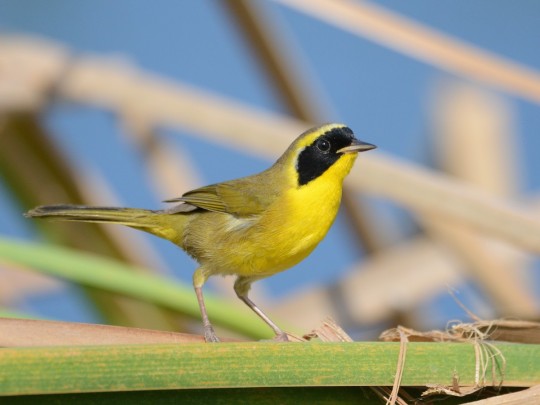
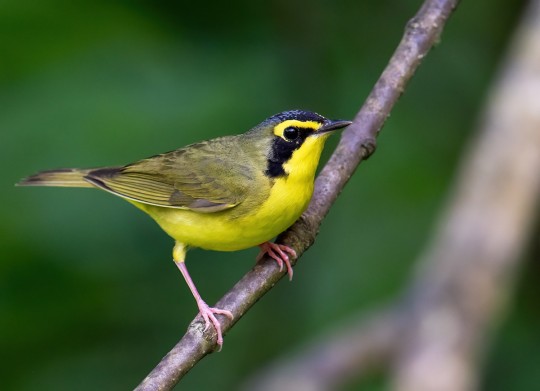
Belding's Yellowthroat (Geothlypis beldingi)
IUCN Rating: Vulnerable
Range: sedentary; endemic to Baja California Sur
Habitat: freshwater marshes with lots of reed, cat-tail, or bulrush; often along marshy river edges as well, and can sometimes be found along brackish coastal marshes or mangroves lining estuaries
Subspecies: 2
Kentucky Warbler (Geothlypis formosa)
IUCN Rating: Least Concern
Range: migratory; breeds in the southeast United States, from Missouri to Maryland, and Pennsylvania down to Louisiana; overwinters in Central America- the Yucatan and Belize down to Panama.
Habitat: Prefers wet forests with a dense understory, such as bottomland hardwood and other riparian woods. This is true both in breeding, migratory, and overwintering habitats.
Subspecies: None
Image Sources: Belding (Alan Van Norman); Kentucky (Matthew Addicks)
26 notes
·
View notes
Text
quick poll to determine photo editing order:
10 notes
·
View notes
Text

Rich woods, bluffs, mesic bottomland forests, rocky hillsides, floodplains, seepage of bogs, springy areas.
Colors range from purple to a purplish white, it is important to note that entirely white petals are rare among this species. The flowers are borne in a raceme and are typically born in early spring from mid-March to late April. ❤️🌸
#awesome#photography#nature#nature photography#photography is magic#spring photography#spring vibes#woods#flowers#wildflowers
12 notes
·
View notes
Text
Dragons, By Devin Johnston
We gathered in a field southwest of town, several hundred hauling coolers and folding chairs along a gravel road dry in August, two ruts of soft dust that soaked into our clothes and rose in plumes behind us. By noon we could discern their massive coils emerging from a bale of cloud, scales scattering crescent dapples through walnut fronds, the light polarized, each leaf tip in focus. As their bodies blotted out the sun, the forest faded to silverpoint. A current of cool air extended from the bottomlands an intimation of October, and the bowl of sky deepened its celestial archaeology. Their tails, like banners of a vast army, swept past Orion and his retinue to sighs and scattered applause, the faint wail of a child crying. In half an hour they had passed on in search of deep waters. Before our company dispersed, dust whirling in the wind, we planned to meet again in seven years for the next known migration. Sunlight flashed on windshields and caught along the riverbank a cloudy, keeled scale about the size of a dinner plate, cool as blanc de Chine in the heat of the afternoon.
#IT"S APPRECIATE A DRAGON DAY BABYYYYYY#I had wondered why one of my poem a day emails was about dragons#And it was so much fun I wanted to share#Dragon#Dragons#Appreciate a Dragon Day#Poem#Poetry#Words
15 notes
·
View notes
Text
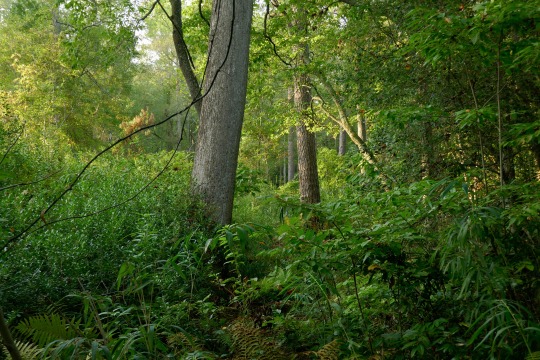
Bottomland Forest, Weymouth Wood Tract
9 notes
·
View notes
Text
updated environment of Western Beleriand part one
Flora, fauna, geography and environment masterlist
Disclaimer: I used both what we can extrapolate is likely indigenous to the region based on descriptions of the landscape and climate as well as my own headcanons and inspirations and reference books on similar habitats as well as books like The Atlas of Middle Earth and The Flora of Middle Earth
Please feel free to ask about any of this, it’d very much a brief overview
Important note: this post is meant to be about the environment in canon with some of my own ideas! That being said Tolkien had obvious bias in his environmental imaginings and I love to explore Beleriand as inspired by other locations! Please feel free to send requests for that!
-Western Beleriand was divided from the East by the River Sirion. It faced the sea to the West.
-Western Beleriand encompasses the coastal regions of Nevrast, the Havens of the Falas and Arvernien. It also includes the landlocked region of Nargothrond, Brethil, parts of Doriath and the woods of Nuath. Some maps and accounts also include Hithlum though this is often considered a region north of Greater Beleriand.
-The River Sirion has two tributaries in western Beleriand, River Narog and River Teglin. Both of these have tributaries of their own.
-Narog was the Southernmost tributary and was one of the largest rivers in Western Beleriand and is the largest of the tributaries to the River Sirion
Ginglith was one tributary to Narog, sourced in wells in the small forest of Núath. It bordered Tumhalad on the West and met Narog some ways North of Nargothrond.
Ringwil, another tributary to Narog was sourced from hills around Nargothrond and ran through the forest Taur-en-Faroth. It was tiny.
-Teglin/Taeglin both met the River Sirion on the borders of Doriath, Teglin flowed from the West through Brethil. Teglin was one of the larger tributaries and had several of its own.
-Celebros meaning ‘silver foam’ was a tributary to Taeglin. It met Taeglin on the western border of Brethil and ran through the forest. At the gorge of Cabed-en-Aras (leap of the deer) near where Celebros met Teglin, Glaurung was slain by Túrin and Niënor took her own life afterwards. The ravine was renamed Cabed Naeramarth or the leap of dreadful doom.
-Maudlin, meaning Golden River, was another tributary to Teglin and ran Northeast to Brethil. Glithui was the third tributary to Teglin and began in the Ered Wethrin from around Amon Darthir. On the other side of this mountain, the source of Nen Lalaith was located.
--One estimate from The Lost Road puts the region at 99 leagues across at its widest but this is not considered Canon and Tolkien often had difficulties in his numerical estimations
My own thoughts!
--Given the descriptions of the region and the different habitats, it is likely a temperate region with temperate coastal parts. That being said, the descriptions are often vague enough that the environment of many different real life places can be explored through it. For example, a Mediterranean climate would fit many of the coastal regions, and Mediterranean forest and scrublands could fit the more inland regions. In real life examples of this can be found throughout coastal Europe, parts of Asia and north Africa, and parts of Australia and New Zealand
-Parts of the river Narog flow underground and have species not found elsewhere in Beleriand outside of the deeper realms of Angband rarely considered by its own inhabitants. On a similar note, Nargothrond is one of the main places outside these deeper parts of Angband (not including marine life) where bioluminescence is found. There are a few bioluminescent species in Menengroth, Nan Tathren, the caves of Nevrast and western Dor-lómin, and Nan Emloth as well.
-West Beleriand consisted of lowlands and bottomlands (the usually flatter floodlands along a watercourse), plains and hilly areas and moorlands. There were also more scattered forested areas and woodlands, as well as the denser Forest of Brethil.
-Resources, imports and goods differ from region to region but overall some of the most prominent resources are timber, clay, wool, orchard fruits, flint, and salt.
-Due to the coastal areas some of the most prominent and advanced shipwrights, cartographers and navigators, and fishers are also found. Many of the coastal communities have studied and mapped the stars as well (I think I have something about this on my post and Barad Nimras)
-The climate was mild though humid without either harsh winters or hotter summers. Colder fronts did occasionally arise from the Encircling Mountains however. The coastal regions, especially around Nevrast, are somewhat warmer and gentler.
-Biodiversity is highest in coastal regions and in the surrounding marshlands.
19 notes
·
View notes
Text
Excerpt from this press release from the Department of the Interior:
The Department of the Interior today announced the expansion of four existing national wildlife refuges, which will allow for the voluntary conservation of up to 1.13 million acres of wildlife habitat in New Mexico, North Carolina and Texas.
Investing in and expanding the National Wildlife Refuge System, managed by the U.S. Fish and Wildlife Service, furthers the Biden-Harris administration’s work to support community-driven efforts to conserve and restore the nation’s lands and waters through the America the Beautiful initiative. Under Secretary Haaland’s leadership, the Department has also established four new Refuges that will help conserve important fish and wildlife habitat, support working lands, and expand opportunities for outdoor recreation.
The new expansion areas include:
Roanoke River National Wildlife Refuge (NC) may now conserve up to 287,000 acres of floodplain habitat along a 137-mile stretch of the Roanoke River from Weldon to the Albemarle Sound, to support rare and at-risk species like the Atlantic sturgeon, cerulean and Swainson's warbers, bald eagles and migratory waterfowl. The refuge was established in 1991 to protect the forests in the Roanoke River floodplain, considered to be the largest intact, and least disturbed, bottomland forest ecosystem remaining in the mid-Atlantic region.
Aransas and Big Boggy National Wildlife Refuges (TX) may now conserve up to 150,000 additional acres of habitat in the Gulf Coast Prairies and Marshes ecoregion of Texas to support whooping crane, Eastern black rail, Attwater's prairie chicken, mottled duck and other wintering waterfowl. Established in 1937, Aransas NWR serves as a refuge and breeding ground and for migratory birds and other wildlife and is best known as the wintering home of the last wild flock of endangered whooping cranes. Establishing in 1983 and designated an Internationally Significant Shorebird Site by the Western Hemisphere Shorebird Reserve Network, Big Boggy NWR is a stronghold for the threatened eastern black rail and provides seasonal and year-round habitat for large populations of waterfowl, wading birds, waterbirds, and shorebirds.
Muleshoe National Wildlife Refuge (NM and TX) may now conserve up to 700,000 acres of habitat in the Southern High Plains along the Texas-New Mexico border to support sandhill crane, pronghorn and lesser prairie chicken, as well as a full suite of other wildlife that rely on the grasslands, playa wetlands and saline lake habitats of the Central Grasslands. Established in 1935, the refuge is the oldest national wildlife refuge in Texas and is best known for hosting one of the largest concentrations of lesser sandhill cranes in North America.
The four final Land Protection Plans for these expansions were developed through public processes and informed by input from local landowners, Tribal leaders, state wildlife agencies, and other stakeholders. The Plans outline land protection priorities for these refuges that will inform the Service’s interest in acquiring parcels from landowners who are willing to sell property (fee-title) or property rights (conservation easements or cooperative agreements) through purchase or donation.
5 notes
·
View notes
Text
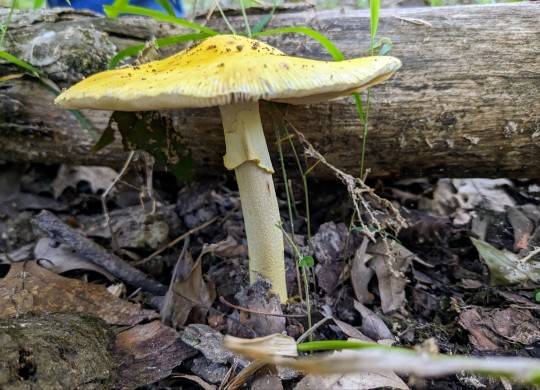
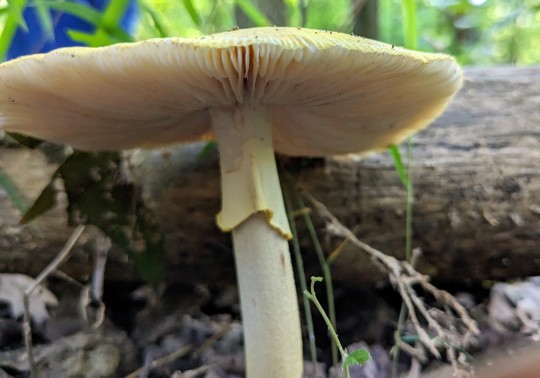

Amanita section Validae
I found this gorgeous, lemon yellow amanita mushroom in a healthy bottomland forest surrounded by pin oaks, river birches, and American elms.
July 26th, 2023
Arnold, Jefferson County, Missouri, USA
Olivia R. Myers
@oliviarosaline
#mycology#Amanita Sect. Validae#amanita mushrooms#amanita#nature#woods#naturecore#forest floor#fairycore#missouri#cottagecore#ozarks#the ozarks#forest#mushrooms#fungi#wild fungi#wild mushrooms#bottomland woods#naturalist#mushroomcore#yellow mushrooms#mushroom photography#nature photography#fungi photography#exploring the woods#mushroom#toadstool
55 notes
·
View notes
Text

ghost pipe (Monotropa uniflora) in a mid-missouri bottomland oak-hickory forest
2 notes
·
View notes
Text

@actualblanketgremlin stoke the fire, pull up a chair, draw the blanket round your shoulders. do not heed the tap at the window.
lost ships. haunted beaches. wildfires and mother bears. getting older. starting this post was a slap in the face at first because I had to conclude I've had this blog almost ten years. I entered this sphere of the internet in an age where everything had a neat label and correspondence-- and I could have never written about the great lakes back then. their spirits are ancient and wild, inland seas that cast off anyone's bridle.
I spoke on Superior being a psychopomp, but it's lake michigan with the most recorded drownings in her waters. it helps that she borders chicago, and besides the city it also has the most developed shoreline for tourists. I spent every childhood summer there, camping in the dunes. the crashing waves call to you all night until you wake to their sound in the morning.
we all believe in the spirits here, but whether you do or not you are compelled to agree that the lake is haunted. sometimes we just don't recognize a ghost staring us in the face. when the great lakes were some of the country's busiest trading routes there were great ships crossing back and forth day and night-- and some of these the lake never gave back. michigan.org talks about the lost ships we managed to find and cling to:
"The bottomland of the Great Lakes is a time capsule of another era, with thousands of lost schooners, steamers and barges carefully preserved by the cold, fresh waters. They're also now preserved by the Michigan Underwater Preserve System, created by legislation in 1980 that preserves them for generations by making it a felony to remove portholes, anchors, even a fork from a wreck within."
now you can find some with just a snorkel-- if you feel ready to look in the mirror. with all of the wrecks we honor, there is a lingering presence beyond the horizon of the souls we never found. did you know we have our own bermuda triangle of lost things? the michigan triangle is said to stretch from around ludington down to benton harbor or so, and then its third point concludes across the lake in wisconsin. the violent storms in this region have swallowed ships and planes throughout the history of colonization in the area. what do you need accomplished so badly that you would cross a sea of storms to see it achieved? can you confront and embrace that kind of power in your life without letting arrogance drag you to the depths? this is the type of working you can bring to her.
there's an anishinaabe legend that I assume was read aloud to everyone who went to public school in michigan. in ancient wisconsin a mother bear and her two cubs were trapped on the shoreline of lake michigan as the forest they lived in burned to ash. in a desperate bid to save her young, she led them into the water and they began to swim. as they were nearing the opposite shore (about 118 miles later) her struggling cubs succumbed to the depths and drowned. the mother bear reached the shore and collapsed facing the lake, waiting for her cubs that would never come. the Great Spirit took pity on her after watching the events unfold. They raised the cubs from the depths and turned them into the North and South Manitou Islands. the mother bear became the Sleeping Bear Dune, an ecological highlight that still waits for her cubs to this day. can you define a maternal energy in your life? who would you address as mother and what protections can that bring? if nothing else just go climb the dune, the view is worth it.
this post is getting long so I'm going to stick with this maternal discussion, which leans into is very upg. I take from lake michigan a high priestess/suit of cups energy which aligns well with a lot of the hekatean rites I make up. in lighter magic I have drawn a lot of healing energy from this lake and I think others would say the same. I'm not really in the "thin veil" crowd but many lake michigan beaches are a gorgeous, powerful place to make an outdoor altar and connect with both ancestors and the locals. use the driftwood and stones of every color. consulting your preferred divination tool on the shore can reveal very interesting threads. storm water collected respectfully from this lake has shattering results-- good luck collecting it.
choose your own adventure on lake michigan. I leave out years' worth of stories-- ghost towns, lights in the woods, the time I found the Hunt. along with many afternoons on a towel with a good book. if visiting for spiritual purposes, take care in putting up your protections, and that includes sunscreen! 💋

(planning to write more of these about michigan but hearing interest or perhaps requests is nice!)
22 notes
·
View notes
Text





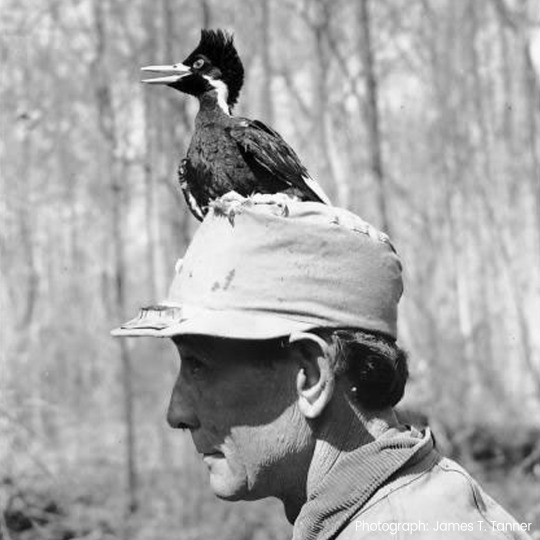
Save the Ivory-Billed Woodpecker: Protect Our Precious Ecosystems! 🌍🪶
The Ivory-Billed Woodpecker, once native to the lush bottomland forests of the Southern US and Cuba, is now critically endangered due to severe habitat loss and hunting. Last seen in Louisiana in 1944 and in Cuba in 1987, this majestic bird may still be out there, but it urgently needs our help.
Although the Ivory-Billed Woodpecker is listed as extinct by the U.S. Fish & Wildlife Service, occasional sightings still offer hope. We need to focus on protecting and expanding their forest habitat to provide safe spaces for these birds.
Preserving these crucial forests not only aids this elusive species but also protects our planet for future generations. Join us in this vital mission to ensure a thriving world for all living beings. 🌿💚
2 notes
·
View notes
Text
Warbler Showdown pt 2; Bracket 1, Poll 1

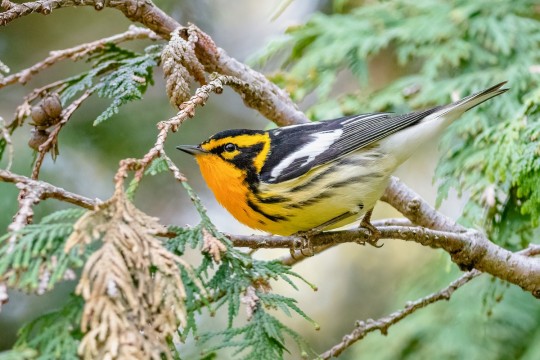
Yellow-throated Warbler (Setophaga dominica)
IUCN Rating: Least Concern
Range: The migratory population moves from the Bahamas and Greater Antilles to lowland Eastern and Midwest states; a more sedintary populations seem to live year-round in parts of Florida, Georgia, and Alabama.
Habitat: prefers wetter habitats, such as wooded steam bottomlands and cypress swamps, though they can be found in dry pine or mixed pine-deciduous forests. Also common in loblolly pine stands.
Subspecies: 3
Blackburnian Warbler (Setophaga fusca)
IUCN Rating: Least Concern
Range: breeds in the New England, Appalachia, and the Easter providences of Canada. Overwinters in the northern Andes, heavily concentrated in Peru, Ecuador and Columbia.
Habitat: coniferous or mixed forests, though during migration they can be found in any wooded area.
Subspecies: none
Image Sources: YTWA (Tyler Ficker); BLBW (Kyle Tansley)
#nww showdown#round 2#yellow throated warbler#blackburnian warbler#setophaga#parulidae#passeriformes
23 notes
·
View notes
Text
little quibble here, white mulberries actually span the full range of colors from the darker berry on the left, to the white one pictured. to my knowledge they are the only mulberry that can be bright white when ripe, but their color is a highly variable trait.
IMHO the darker ones taste better too.
you can ID white mulberries from other species of mulberry by the fact that they are shorter (note the pictured white mulberry is shorter than all the others; it is actually on the long side for a white mulberry and some can be even shorter than that) and are usually borne in clusters of several berries (some other mulberries such as the red mulberry, tend to be solitary) and also by other characteristics of the plant.
in the US, in most places, most mulberries are white mulberries, which are actually an invasive species here. this is true even of berries darker in color.
mulberries are a tree of bottomland areas, but the white mulberry prefers high sunlight conditions, whereas the native red mulberry prefers growing in small gaps in mature bottomland forests.
part of why white mulberry is dominant is because we humans have cleared most of the bottomland forests, so most bottomlands are either open areas, or younger forests where there are higher light levels. it takes around 90 years for a bottomland forest to reach a stage of maturity where red mulberries move back in.
i think it would be really cool if we could protect our bottomland forests, allow them to reach maturity, and see a rebound of the red mulberry
thanks for coming to my TED talk

Berries.
16K notes
·
View notes